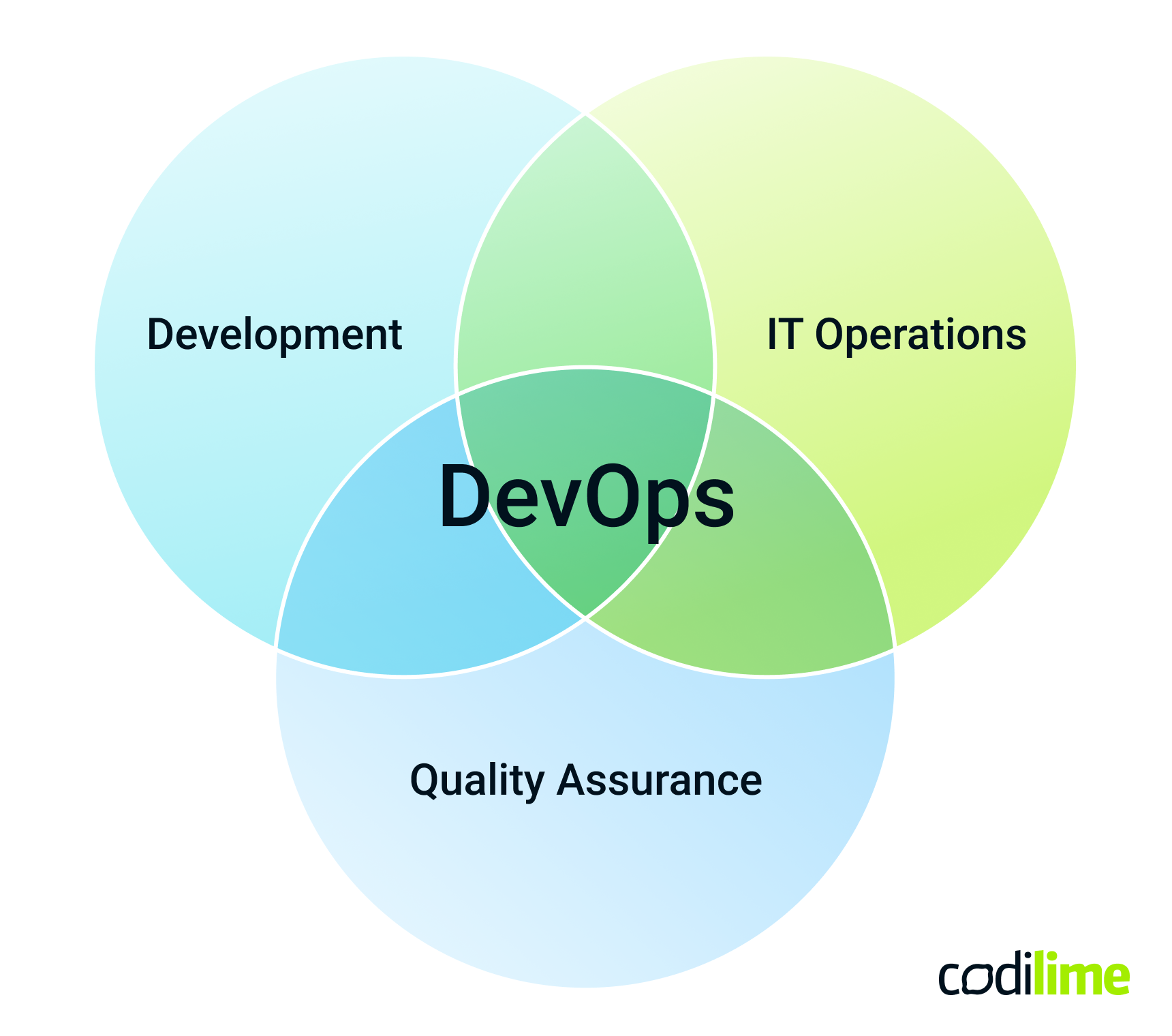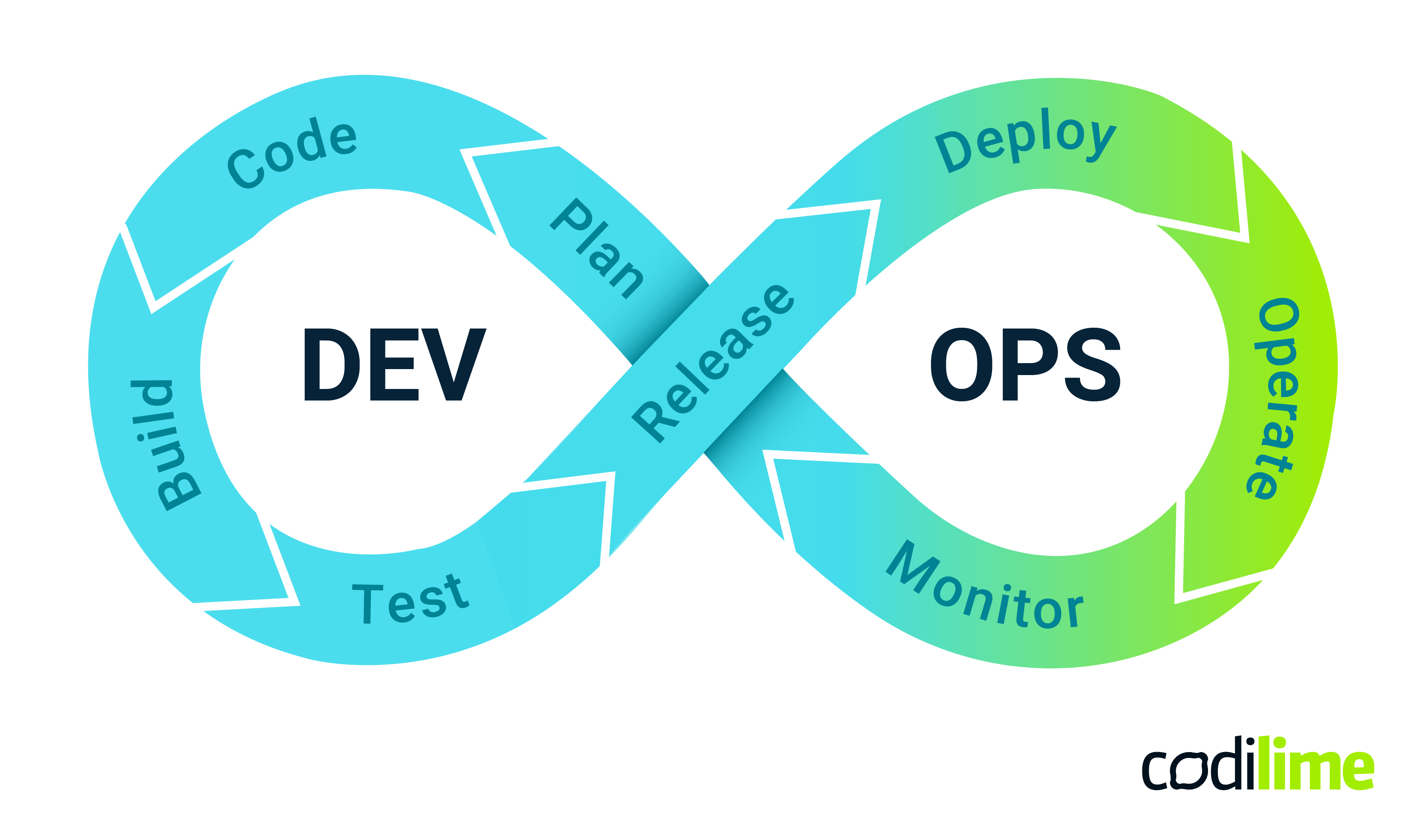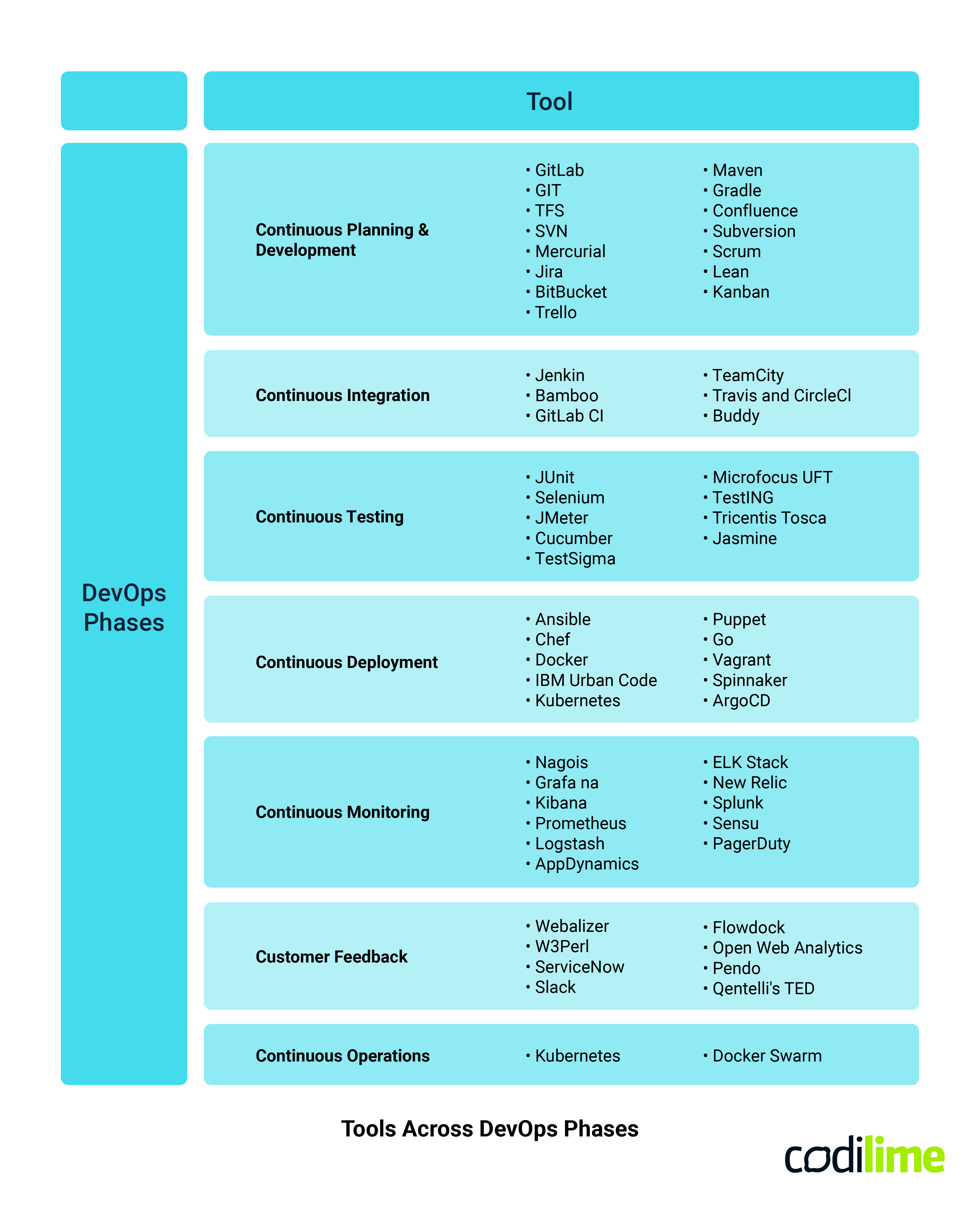DevOps is transforming how software is built and deployed by offering a more collaborative working environment and bridging the gaps between development, operations, and quality assurance. However, to fully profit from all the advantages that DevOps has to offer, it is recommended to adopt the complete DevOps lifecycle process.
In this article, we’ll explain the DevOps lifecycle, its phases, and the tools used to build software.
The importance of the DevOps methodology
DevOps is a widely used methodology and is already well-known in the IT industry. As the name suggests, “Dev” in this case stands for software development, and “Ops” stands for IT operations. This next evolution of agile methodologies connects the development team, operations team, and quality assurance to build software faster, and that is not the only advantage of DevOps. It is a set of principles that allows businesses to automate services, resolve issues, and develop features quicker than ever.
Nowadays, DevOps culture is considered to be crucial for most IT companies. DevOps workflow enables delivery of software products at high speed and of better quality. The disconnect between software development and operations was impeding the software development process.

Here, we offer you a glimpse of what DevOps is as an introduction to the topic. We recommend checking out the differences between SRE vs. DevOps if you need a more in-depth understanding of DevOps.
>> Discover our DevOps services and solutions.
What is the DevOps lifecycle?

Developing superior-quality software has to be a structured process. The DevOps lifecycle combines a series of different stages for smooth software development. These stages help to derive the most leverage from the DevOps methodology.
More importantly, the entire DevOps lifecycle process is iterative. It means that at any point of development, the stages can be repeated, or you can simply go back to the particular stage where the issue occurs. This kind of approach accelerates innovation and speed.
Let’s see how the DevOps lifecycle stages work:
- Plan - In the planning stage, it is important to identify both business and end-user requirements. Professionals also design a project plan to meet established criteria and deliver the best possible product.
- Code - At this stage the team works on code development. To facilitate code production, the development team uses various version control tools and extensions, for example, Git
, which helps them maintain good code practices and manage the product properly.
- Build - After the coding stage, developers submit code to a shared repository with the help of build tools, such as Maven
or Gradle
.
Developing new software might be a challenge, but our dedicated teams provide you with the best-quality custom software development services.
- Test - Ensuring software quality is another crucial stage. If the building stage is ready, the quality assurance team performs a series of tests, such as user acceptance tests, security tests, speed tests, integration tests, etc. They usually use tools like JUnit or Selenium.
- Release - In this stage, the team prepares and marks artifacts for deployment (container images, code packages, binary files, or patches). Basically, at this point, a specific build is selected from stage number three.
- Deploy - In this stage, the build is released with the help of DevOps lifecycle tools, for example, Docker
, Nomad
, or Amazon Web Services
.
- Operate - The release is ready to use. The operations department manages server configuration using DevOps tools such as Chef
, Ansible
, and Puppet
to make the new version accessible to users.
- Monitor - Based on collected data about consumer behavior and application performance, the DevOps workflow is assessed. Observing the whole environment helps to identify bottlenecks that negatively impact operations and production team performance.
The 7 Phases of the DevOps Lifecycle

As we explained earlier, in DevOps methodology, everything is iterative. Let’s see how the entire lifecycle works, divided into seven phases. Bearing in mind the iterative character of DevOps, each phase can iterate throughout the project as many times as needed until it’s ready to deploy.
Below, you’ll find an explanation of the DevOps lifecycle phases and recommended tech stack:
1. Continuous development
In this phase, the program is planned and coded throughout continuous development. The entire development process is divided into smaller development cycles. Thanks to this procedure, the DevOps team can speed up the entire software development process. The vision for the whole development cycle is mapped out in the continuous development phase, which enables developers to establish project requirements properly. As a result, the team begins to ideate its final objective.
There are many version control systems on the market, but in DevOps, no tools are must-haves. However, most teams use a particular source code maintenance software. The most common are JIRA, Git, Mercurial, and SVN. There are other tools available, such as Ant, Gradle, and Maven, which enable the packaging of programs into executable files. Then, these executable files are handed on to the next phase of the DevOps lifecycle.
2. Continuous integration
In the continuous integration (CI) phase, various processes are executed. During this phase, most changes are made, and CI helps to address these changes daily. Frequent changes might be challenging, but CI enables engineers to identify any issues and resolve them quickly before they become serious.
New code functions are continuously integrated with the original source code throughout this phase. The system's upgraded code integrates easily because of continuous development. One of the most widely used technologies for continuous integration is Jenkins. It assists in fetching the existing code and generating executable builds. We have listed more CI/CD tools for DevOps here.
3. Continuous testing
In the continuous testing phase, the developed code is tested to detect potential bugs and issues. Here, quality assurance (QA) plays a vital role in providing usable software. The QA process also checks whether the software meets the established requirements.
Continuous testing uses automation technologies like JUnit, Selenium, and TestNG to let the QA team examine various codes at once. By doing this, they can check if the generated program functions flawlessly. Automated testing is essential for saving money and time.
Additionally, continuous testing uses Docker containers to replicate the test environment. A Docker container has all the needed libraries, system tools, and runtime code to execute an application.
Check out also how Docker is getting stronger and stay up-to-date with other DevOps trends in 2023.
4. Continuous deployment
The continuous deployment phase checks product deployment without impacting the application’s performance. During this phase, it is crucial to make sure the existing code is accurately deployed across all accessible servers. By doing this, there is no need for scheduled releases. Also, it speeds up the feedback and code review system, enabling engineers to fix problems more efficiently and precisely.
You will find many more benefits of continuous deployment in this article.
5. Continuous monitoring
To assess the entire performance of a software product, a continuous monitoring phase is crucial. This phase handles the data processing of the developed app. Continuous monitoring allows developers to spot things in the program that need additional work.
Additionally, it keeps track of the product's functionality. As a result, it is among the DevOps lifecycle's most important phases.
The operations team uses DevOps tools, including Nagios, Splunk, Sensu, ELK Stack, and NewRelic, to monitor user activity. As a consequence, engineers can proactively assess the system's general health during continuous monitoring.
Proactive monitoring enhances system performance and efficiency while also lowering maintenance costs. Also, critical and serious issues are immediately reported to the development team for correction in the early phases. As a result, difficulties are resolved more quickly.
6. Continuous feedback
Continuous feedback is required to determine and assess if the product’s final goal has been reached. It enables refinement of the current version and delivering a new version based on feedback from clients.
Analyzing the entire process of product development can significantly improve its quality. In this phase, the most important aspect is gathering data about the client’s feedback.
7. Continuous operations
The final phase of the DevOps lifecycle is the quickest one. Continuity is at the center of all DevOps operations, allowing developers to automate release operations, discover errors fast, and generate better versions of software products. Continuity is essential for reducing disturbances and other additional processes that impede progress.
In this phase, development cycles are shorter. Thanks to that, businesses can accelerate the time to market the product. DevOps increases the worth of software products because it helps to make them more efficient, which attracts new customers.
Below, you will find a table with various DevOps tools used across specific phases:

Visit our technology stack page to learn more about what tools we use in DevOps at CodiLime.
Conclusion
The core element of the DevOps lifecycle is continuity. Omitting any phase of the DevOps lifecycle process might result in serious issues that will impede product development. Any lack of continuity can cause improper bug detection and damage the overall process.
The DevOps methodology was created to increase the efficiency of software product development. To do this, companies must adhere to the best practices of the DevOps lifecycle in order to succeed and stay ahead of the competition.








